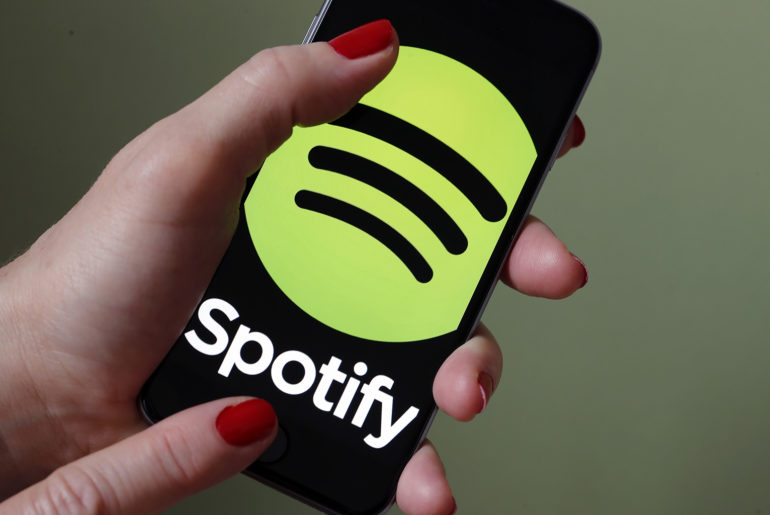The business of streaming music on services like Spotify and Apple Music has become fiercer than ever. While the business of music streaming is still in a nascent stage, the trends suggest a lot about where it is headed. For Spotify, which recently issued its Q3 financial results, the news isn’t all that warm and welcoming.
At the end of September 2018, Spotify announced that it has a global subscriber base of 87 million people; a climb of 4 million on the 83 million subscribers it had at the end of June. This is in-line with Spotify’s expectations, but the new figure represents a slowdown in growth velocity. In Q3, Spotify saw an average addition of 1.33 million subscribers per month. In the earlier three months, Spotify had added 8 million subscribers – an average of 2.67 million per month.
Spotify added 16 million subscribers in the first nine months of 2018, and ended September with 191 million total Monthly Active Users (MAUs) – across both ad-supported and premium categories. But the most glaring detail, something Spotify hasn’t made a huge deal about, is that the service
turned a net profit for the first time ever.
The net profit Spotify turned is not a huge amount (€43 million). Spotify’s total Q3 revenue stood at €1.35 billion, and its operating performance showed a small loss (-€6 million). In fact, the €43 million net profit made up just 3.2% of its €1.35 billion turnover in the quarter.
So how did Spotify manage to turn a net profit, something experts said was impossible anytime soon? Especially after the company posted a net loss of €563 million in the first half of this year? One cause of the net profit is China’s Tencent Music (the company
filed to go public in the USlast month). Spotify – which owns around 9% in Tencent Music Entertainment – received a €125 million tax-related benefit in Q3 because of a change in the value of its investment in Tencent Music.
The other reason for Spotify’s first ever net profit is the not-so-flattering cost-cutting. Spotify spent €135 million on Research & Development in Q3, down 5.6% compared to €143 million in Q2. It also reduced sales and marketing costs by 15.6% quarter-on-quarter, down to €146m. Overall, Spotify’s cost-cutting saved the company €71 million versus the previous quarter.
What does Spotify’s latest numbers mean for the music streaming business? How does it hold up against its biggest competitor, Apple Music?
While Apple has been fairly secretive about its subscriber and streaming numbers, CEO Tim Cook did provide some insight during Apple’s earnings call earlier this year (July 31).
According to Cook, Apple Music now has “
well over 50 million listeners” across paying users and free trials. Apart from a 50% year-on-year revenue growth in Q2, Apple Music’s global paying subscriber base grew over 60% from June 2017 (27 million) to June 2018 (over 44 million).
While Apple Music is still trying to catch up to Spotify in terms of paid subscriptions around the globe, it has made some huge strides. According to CEO Cook, Apple Music took the
position of market leader in North America– topping streaming rival Spotify. He also said that Apple Music is the top streaming service in Japan.
How quickly Apple Music has been catching up with Spotify can be seen with the streaming numbers of some of the biggest albums released this year.
Starting with Drake’s massively successful
Scorpion,– which has spawned hit singles such as '
God's Plan', '
Nice for What', '
I'm Upset', '
Don't Matter to Me', '
In My Feelings' and '
Nonstop' – the album broke both Apple Music and Spotify records. According to
Apple Music’s Instagram post,
Scorpionwas streamed more than
170 million times in its first 24 hours of release. On Spotify,
Scorpion, according to
Spotify Charts, was streamed around
130 million times.
Travis Scott’s ASTROWORLD, another album that topped charts worldwide, racked up
64.5 million global streams on Spotify within its first 24 hours. On Apple Music,
ASTROWORLD recorded
80 million total global streams. Even in the case of
J Cole’s KOD, Apple Music streaming numbers topped Spotify with
64.5 millionstreams in the first 24 hours. In comparison,
KOD was streamed
36.7 million times on Spotify.
As we can see, Apple Music has been steadily gaining on Spotify in terms of streaming numbers for big releases. The market of music streaming is only going to get more competitive, and the big players will try to consolidate the market in their own favor. According to
estimates by Midia, there are 229.56 million paying music subscribers around the world. Of these 229.56 million, Spotify has a 36% market share while Apple Music has a 19% share. Amazon claims a 12% market share with 27.9 million subscribers.
It’ll be interesting to see how these services perform as the number of people streaming music rapidly increases.

